Understanding the Intricacies of Milling vs Turning in CNC Machining
 Oct 23,2023
Oct 23,2023

Welcome to the Tuofa CNC machining blog! As experts in CNC machining, we are here to guide you through the intricacies of two fundamental processes: milling and turning. In this article, we will compare and contrast milling and turning, exploring their mechanics, tooling, material suitability, surface finish, precision, cost analysis, practical applications, advances, environmental considerations, future trends, and the benefits of integrating these processes.
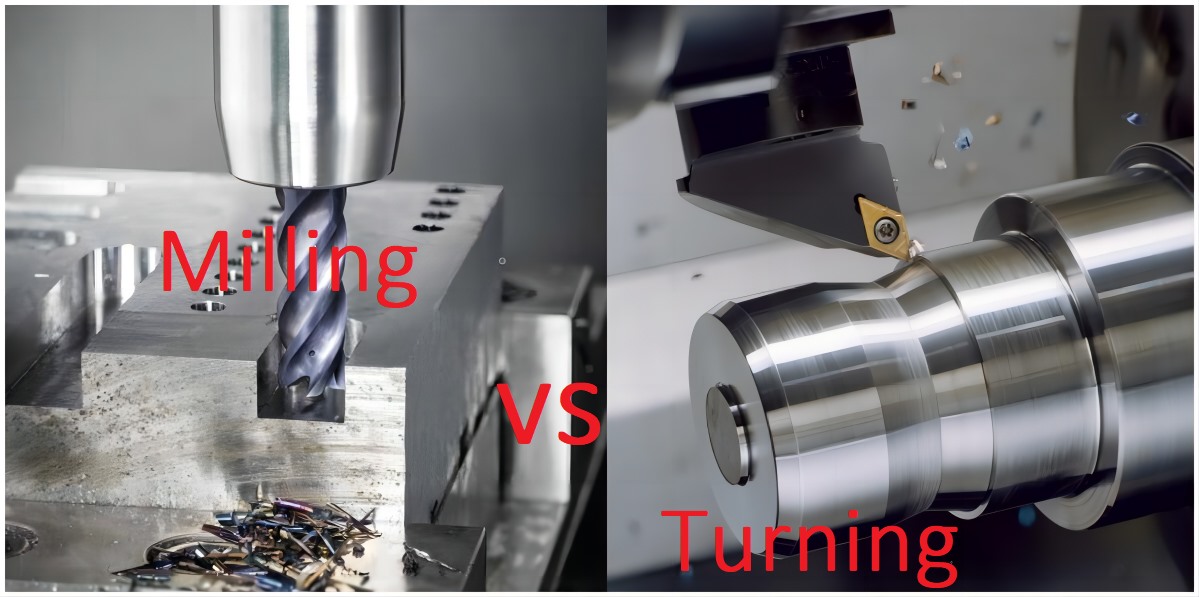
The Mechanics of Milling and Turning
Let's start by understanding the basic processes involved in milling and turning. In milling, the cutting tool rotates and removes material from the workpiece, creating intricate shapes and profiles. This process involves multiple types of movements, including linear movements along different axes and rotational movements of the cutting tool. On the other hand, in turning, the workpiece rotates while the cutting tool removes material to create round shapes like cylinders and cones. This process mainly involves linear movements of the cutting tool along the workpiece. Both processes rely on these movements to achieve their desired results.
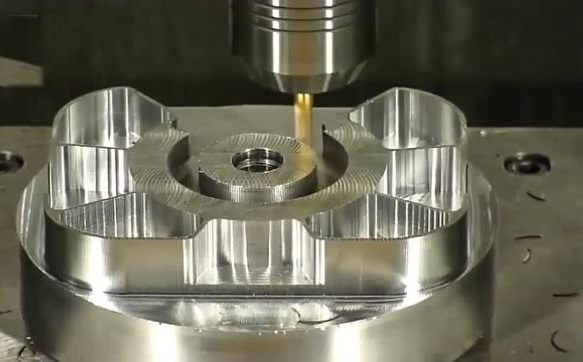
CNC milling
The CNC milling process contains the following steps.
- 2D and 3D model preparing for CNC turning and milling.
- Design exporting to a CNC-compatible file format.
- Setting up a CNC milling machine and operating a CNC mill turn center.
Axes of Motion of CNC Mill Center
There are three basic axes of motion for the precision milling center which are X-Y-Z. All these help in explaining the mill's basic movement, concerning an operator facing the machine. The Z-axis represents the movements like up and down of the milling spindle while the X-axis represents the left and right and the Y-axis represents the front and back
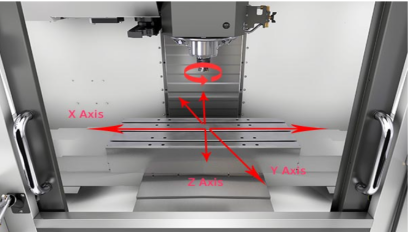
Basic axis of motion for precision milling X-Y-Z.
YouTube video showing CNC milling and how does it work?
What is micro milling
Specialized small precision milling centers used to create very small and intricate features are called micro milling. In industries like micromechanics, optical, and electronics very small and detailed features are required on miniature milling parts with high tolerance so the micro milling is used there.
The multi-axis micro precision milling center is used for advanced milling parts. This micro milling contains 5 axes providing better surface finish and quality. For high control and flexibility of tool movements and orientation micro milling is most demanding.
YouTube video showing CNC micro milling.
Difference Between Lathe and Milling
Lathe vs milling are two different manufacturing processes with different functions and applications. A wheel for metal known as a lathe rotates the workpiece when a stationary tool shapes it in a cylindrical shape with great precision and surface finish. The turning center is great for symmetrical work for manufacturing cylindrical shapes such as pins shafts and cylinders. While a precision milling center is used moving tool to shape a milling part in certain directions it helps in creating a contour and flat surfaces. Precision milling center helps in manufacturing complex slots, pockets, and shapes.
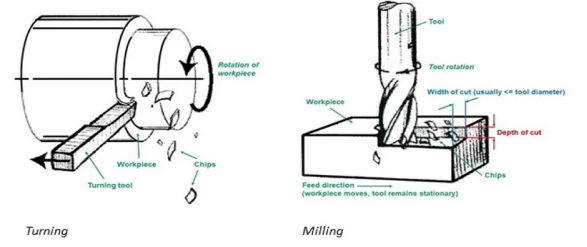
Image showing the difference between Lathe and Milling.
Turning Vs Milling Overview
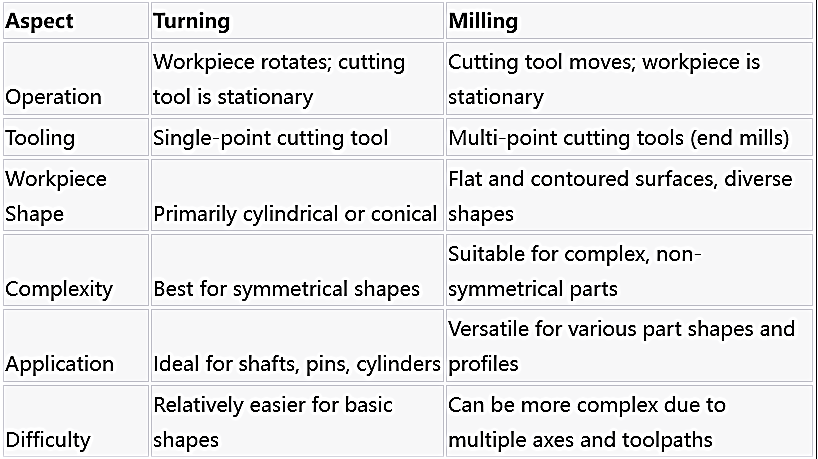
Tooling and Equipment
The tools used in milling and turning are designed to suit the specific requirements of each process. In milling, a variety of cutting tools can be used, such as end mills, face mills, and ball mills. These tools have multiple cutting edges and can remove material from different angles, allowing for the creation of complex shapes and profiles. In contrast, turning primarily uses single-point cutting tools, such as lathe tools or inserts. These tools have one cutting edge and remove material as the workpiece rotates. The machinery involved in milling includes milling machines, which can range from simple three-axis machines to advanced five-axis machines, while lathes are commonly used for turning.
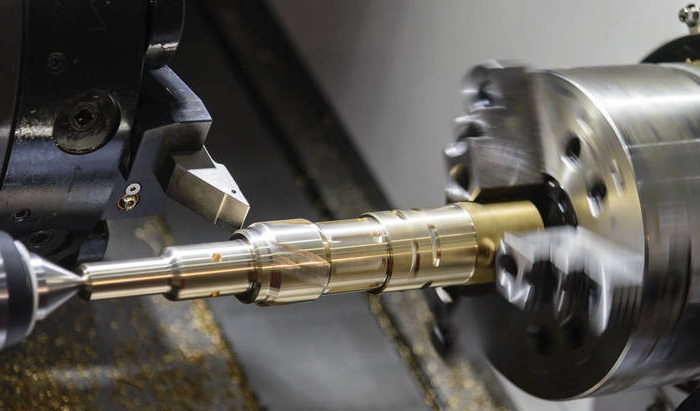
CNC turning machine.
Milling Machine vs Lathe
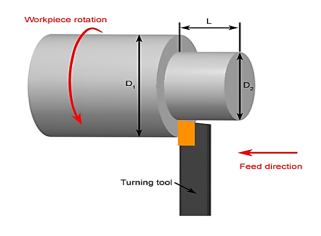
Turning images
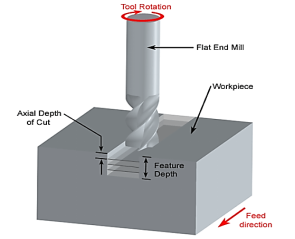
Milling images
Material Suitability
When selecting between milling and turning, it is essential to consider the material being machined. Some materials are better suited for milling due to their hardness or the need for intricate shapes, while others are more suitable for turning due to their ductility or size. For example, milling is typically preferred for materials like steel, aluminum, and titanium, which require complex shapes and profiles. Turning, on the other hand, is often used for materials like brass, copper, and plastics, which can be easily shaped into round geometries. However, advancements in CNC machining have made it possible to mill and turn a wide range of materials, providing greater flexibility in material selection for both processes.
- Metals: Brass, Copper, Aluminum, Nickel-based alloys, Titanium, Cast iron, mild steel, stainless steel, tool steel, gold, silver
- Plastics: Polyethylene, PVC, Acrylic, Delrin (POM), Polycarbonate, Polypropylene, Nylon
- Composite Materials: Fiberglass composites, Carbon fiber composites
- Ceramics: Zirconia, Alumina
- Wood: maple, oak, pine, cedar
- Hard Materials: Inconel, Tungsten, molybdenum, niobium
Surface Finish and Precision
Surface finish and precision are important considerations in CNC machining. In milling, the achievable surface finish can vary depending on factors such as tool selection, machine parameters, and material properties. The use of high-quality cutting tools and proper machining techniques can result in excellent surface finishes. Turning, on the other hand, tends to produce smoother surface finishes due to the continuous contact between the cutting tool and the rotating workpiece. The precision level achievable in both milling and turning processes is highly dependent on the machine's capabilities, the quality of the cutting tools, and the skill of the operator. A comparison table below highlights the surface finish and precision levels achievable in milling and turning:
| Surface Finish | Precision | |
|---|---|---|
| Milling | Depends on tool selection and machining parameters | Can achieve high precision with advanced machines |
| Turning | Produces smoother surface finishes | Precision depends on machine capabilities and cutting tool quality |
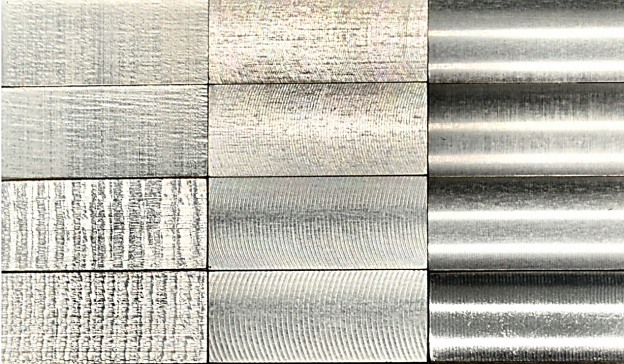
Cost Analysis
Cost is a significant factor in any manufacturing process. When considering the costs associated with milling and turning, several factors need to be taken into account. One of the key cost considerations is tool wear. In milling, due to the nature of the process and the multiple cutting edges of the tools, tool wear can occur more rapidly. This may require frequent tool changes, increasing tooling costs. On the other hand, turning typically involves a single cutting edge and therefore tends to have slower tool wear, resulting in potentially lower tooling costs.
Additionally, energy consumption is another factor to consider. Milling machines generally require more power due to the complexity of the process and the need for multiple axes of movement. However, advancements in machine efficiency have led to the development of more energy-efficient milling machines. Operational efficiency also plays a role in cost analysis. Turning, being a simpler process, can often be more efficient in terms of cycle times and setup. Ultimately, the specific project requirements, material properties, and production volumes will determine the cost-effectiveness of milling vs turning for a particular application.
Practical Applications - Case Studies
Real-world examples of projects that utilize milling and turning processes can provide valuable insights into their practical applications. Let's explore a few case studies:
Case Study 1: Automotive Component Manufacturing
In the automotive industry, precision parts are required for various components. One such example is the production of engine pistons. Turning is commonly used to create the round shape of the piston, while milling is employed to enhance the piston's features, such as valve pockets and ring grooves. This integrated approach allows for precise control over both shape and functionality, resulting in high-quality pistons for optimal engine performance.
Case Study 2: Aerospace Manufacturing
In aerospace manufacturing, lightweight materials like aluminum and titanium are commonly used. Milling plays a critical role in creating complex structures, such as aircraft wings and fuselages, with intricate profiles and cutouts. Turning is utilized for producing round components like engine shafts and landing gear components. The integration of milling and turning processes ensures the efficient production of aerospace components with high precision and structural integrity.
By combining the strengths of milling and turning, manufacturers can achieve enhanced efficiency, improved precision, and the ability to create complex geometries. The choice between milling and turning depends on various factors, such as the desired shape, surface finish, material properties, and cost considerations.
Chinese Machining Services
Precision Engineering for Innovators
Send drawings to info@tuofa-cncmachining.com
Faster and Cheaper
Advances in CNC Milling and Turning
The field of CNC machining is constantly evolving, paving the way for advancements in milling and turning processes. These advancements have significantly improved efficiency, precision, and increased the range of materials that can be machined. Let's explore some recent technological advancements:
High-Speed Machining
Advancements in cutting tool materials and machine design have enabled high-speed machining processes. High-speed milling and turning techniques allow for increased feed rates, reducing cycle times and improving productivity. The use of advanced tool coatings and optimized machine control systems also contributes to improved surface finish and tool life.
5-Axis Machining
Traditional milling and turning processes are limited to three axes of movement. However, advancements in machine design and control systems have led to the development of 5-axis machines. These machines can move the cutting tool along five axes simultaneously, allowing for greater flexibility in complex part geometries and reducing the need for multiple setups and operations.
Automation and Robotics
The integration of automation and robotics has become increasingly prevalent in CNC machining. Automated tool changers, pallet systems, and robotic arms can streamline the milling and turning processes, improving efficiency and reducing human error. This automation also enables lights-out manufacturing, where machines can run continuously without the need for constant human supervision.
Environmental Considerations
As responsible manufacturers, it is essential to consider the environmental impacts of CNC machining processes. Here are some environmental considerations:
Recycling and Waste Reduction
CNC machining generates waste material in the form of chips and scraps. Implementing recycling programs and utilizing waste reduction techniques, such as optimizing cutting parameters to minimize material waste, can help reduce the environmental footprint of the machining process.
Energy Efficiency
Advancements in machine design and control systems have led to more energy-efficient CNC machines. Energy-saving features, such as regenerative braking systems and intelligent power management, can reduce energy consumption during milling and turning operations.
Coolant Management
Coolant is essential in CNC machining to lubricate the cutting tools and remove heat generated during the cutting process. Proper coolant management practices, such as efficient filtration systems and recycling of coolant, can minimize the consumption of resources and reduce the environmental impact.
Future Trends
The field of CNC machining is continuously evolving, and several future trends are shaping the industry. Let's look at some potential developments:
Advanced Automation with Artificial Intelligence (AI)
The integration of artificial intelligence into CNC machining processes holds immense potential. AI algorithms can help optimize tool paths, predict tool wearand performance, and identify potential machining issues in real-time. This can lead to improved efficiency, reduced waste, and enhanced overall process control.
Additive Manufacturing and Hybrid Processes
Additive manufacturing, also known as 3D printing, is gaining popularity in the manufacturing industry. The integration of additive manufacturing with CNC machining processes allows for the creation of complex geometries and the incorporation of multiple materials. This hybrid approach combines the strengths of both processes, opening up new possibilities for design and manufacturing.
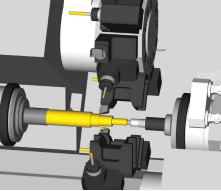
Image showing CNC pinch turning.
Smart Machining and Internet of Things (IoT)
The implementation of IoT technology in CNC machining enables connectivity and data exchange between machines, tools, and systems. This connectivity allows for real-time monitoring, predictive maintenance, and process optimization. Smart machining systems can analyze data, identify patterns, and make informed decisions to improve productivity and quality.
Integrating Milling and Turning
While milling and turning are distinct processes, there are scenarios where integrating both approaches can offer significant benefits. This integrated approach allows for the efficient production of complex components with high precision. Here are some key benefits of integrating milling and turning processes:
Reduced Setup Time and Increased Efficiency
Integrating milling and turning processes eliminates the need for multiple setups and transfers between machines. This reduction in setup time results in increased efficiency and shorter lead times for complex projects. Additionally, having both milling and turning capabilities in a single machine reduces the need for part handling and minimizes the potential for errors.
Improved Accuracy and Quality
Integrating milling and turning processes ensures precise alignment between features created by milling and those produced by turning. This alignment improves accuracy and quality, resulting in parts that meet or exceed the required specifications. The integration also allows for in-process inspections, ensuring any deviations from the desired tolerances are addressed promptly.
Try Tuofa Now!
Custom solutions for complex designs: send drawings to info@tuofa-cncmachining.com
Real human quotes are more accurate than software quotes
Enhanced Design Capabilities
The integration of milling and turning processes expands the design possibilities for engineers and designers. Complex parts with intricate features and contour shapes can be manufactured more efficiently and accurately. This flexibility in design capabilities opens up opportunities for innovation and product differentiation.
When to Use Turning or Milling
The decision to use milling or turning depends upon the feature required and the part design we are working on. Milling is normally done to produce flat, square, and large parts with complex features. While turning manufacturing technique is used to develop cylindrical shapes.
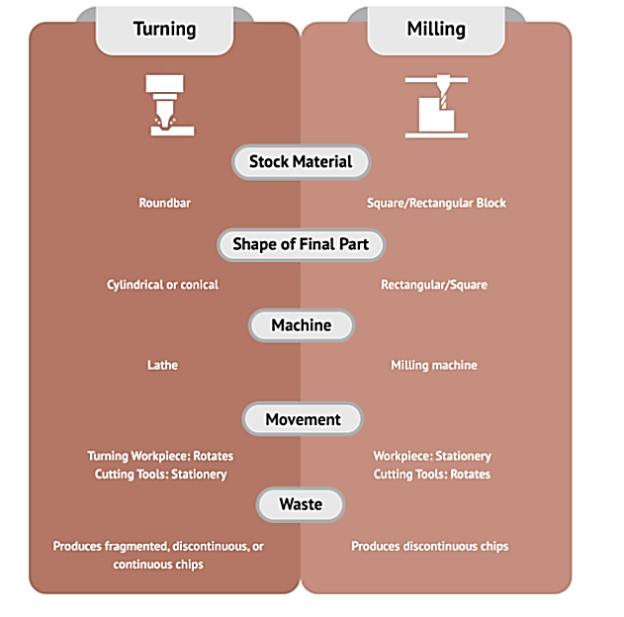
Turning Stock
The turning process is done by lathe. The turning manufacturing process is a subtracting process in which cutting tools remove the material from the stock. For lathe technical skilled operators are required throughout the production on the other hand for the CNC machine the production is automated.
Milling Stock
Milling is also a subtracting process in which stock material is removed by a rotating cutting tool. There are a variety of milling cutting tools that are used to crave the stock of square shapes into desired shapes for a vast range of multiple applications. CNC milling turning is an automated high-speed cutting machine that converts the stock to the desired shape with high precision accuracy and aesthetic surface finish.
What is stock
Stock is the raw material that is considered a workpiece in CNC milling and turning which is then shaped with the help of cutting tools. The stock is converted to the desired shape and features with precise cutting using different machining processes. This stock material is converted to use full by-products for different industrial applications. Stock can be metal, plastic, and composite. The stock will lose the material and become a smaller part with fixed dimensions for specific applications.
Which Process Offers Higher Precision?
Both the CNC milling and turning are precise depending on the application of the machine tool.
The turning process is more precise in cutting a symmetrical part which is cylindrical. It provides high accuracy, and precision in surface finish, diameter, and roundness of cylindrical shapes.
Milling is precise and accurate for flat and contour surfaces
Conclusion
In conclusion, milling and turning are fundamental processes in CNC machining that play vital roles in various industries. By understanding the mechanics, tooling, material suitability, surface finish, precision, cost analysis, practical applications, advances, environmental considerations, future trends, and the benefits of integrating milling and turning, businesses can make informed decisions on which process to use for their specific manufacturing needs. Additionally, integrating these processes can offer unique advantages for complex projects. At Tuofa, we are committed to providing high-quality CNC machining services that utilize the best-suited processes to meet our clients' requirements. Contact us today to learn more about how we can assist you with your CNC machining needs.
Custom CNC turning and CNC milling capabilities of China Tuofa Factory
Toufa contains a large set up of CNC milling and turning handled by experienced professionals that will help you to best design and manufacture the product. The manufacturing speed is fast due to large machine numbers. They will provide you with a friendly environment where you can ask and design what you want. The product finish was highly précised and accurate with high dimensional tolerance.
FAQs
-
Turning vs milling vs drilling
In the turning process, the cutting tool remains stationary while the workpiece rotates relative to the cutting tool. In the milling process, the workpiece remains stationary while the cutting tools move and remove the material to shape the workpiece. Drilling produces holes in the workpiece with the help of a rotating cutting tool which normally contains two cutting edges.
-
Mill turn vs turn mill
Mill-turn vs turn mill are the terms used to refer to the integrated machine or hybrid machine that can perform both turning and milling operations. They contain a CNC mill turn center which is a rotatory work holding device that holds and rotates the workpiece while the cuttings tool can move in different directions to shape the stock. This hybrid machinery allows less tool changing, speeds up the work, and help in producing complex shapes.
 Tel/WeChat:
Tel/WeChat:  Email:
Email: 
 Home
Home
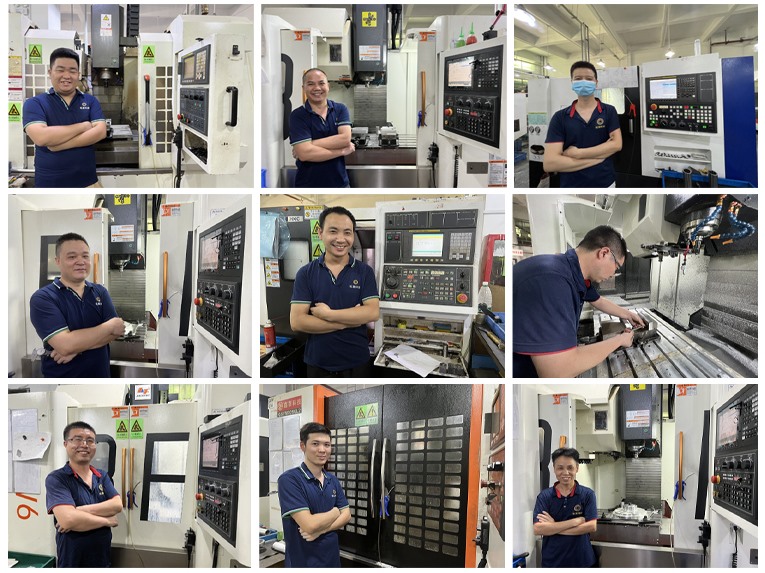

 How Much Does Prototype CNC Machining Cost?
How Much Does Prototype CNC Machining Cost? 







